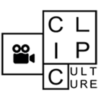THINGS YOU MUST KNOW TO MAKE A CORPORATE VIDEO
A video is a good method of reaching more people and connecting a wider range of population with your brand. But a lot of the businesses tend to move away from videos because not a lot of them have experience regarding the video making process. You can rely on an agency or a company, but you still need to have a basic idea of how the whole process works.
Though outsiders may feel overwhelmed, the production process of a video is quite smooth and very structured. Different parts of jobs are distributed among different members of the production team, and everyone just needs to do their part as required.
There are a number of types of videos that a business can choose from to make. They can choose to make an introductory video, an interview video, a vox pop video, a corporate audio visual, an animated explainer, a case study, or a promotional video.
After choosing the type of video, the next usual steps are mainly divided into three parts.
Pre-production
At this stage, the necessary preparations are taken to create the video. A lot of time should be allocated for this part so that the rest of the project becomes convenient and efficient.
Ideation: The first part of the process is to have a clear idea about what sort of messages you want to portray through the video, how you want to do it, and who is your target group. This is the main brief for the project.
Scripting: Based on the requirements and ideas, the script is written. Usually, there is an experienced scriptwriter or a team of scriptwriters who research the topic, study the references and write the final script.
Storyboarding: A breakdown of the script is necessary to streamline the rest of the production process. It also helps to visualize the end product.
Recce: Someone or some members of the production team usually visits the location of the shooting to help with any preparations for the day of the shoot. It also is to make sure there are no unknown obstacles or inconveniences hampering the shooting process.
Casting: If there is any character needed for the video, or if any voice actors are needed, the production team will cast them by this time.
Production
This part includes the shooting of the video and managing other assets required for the video, like photographs, voice recording, etc.
Shooting: This is where the hardest work is done. All the clips necessary for the video are taken through the hands of skilled cinematographers under the expert direction of the director with sophisticated tools to get the best output.
Voice recording: If any voiceover is needed for the video, they are also recorded during the production procedure.
Post-production
Everything comes together in this part.
Editing: The clips and voice recordings were taken during the production process are put together cleverly by an expert editor to make the video interesting to watch. The editor also needs to ensure that the intended message is conveyed properly.
Graphics and Animation: Some motion graphics and animations may need to be added in certain places for a better understanding of the idea and to make the video intriguing.
Music: Perfect music will tie it all together. It is a very important part of the video. The music choice can make or break the video.
If you are not looking to make a TV or Online commercial video for your business, there’s no need to hire an advertising agency. It will be intuitive to hire a video production company for making the video to uphold your brand.


